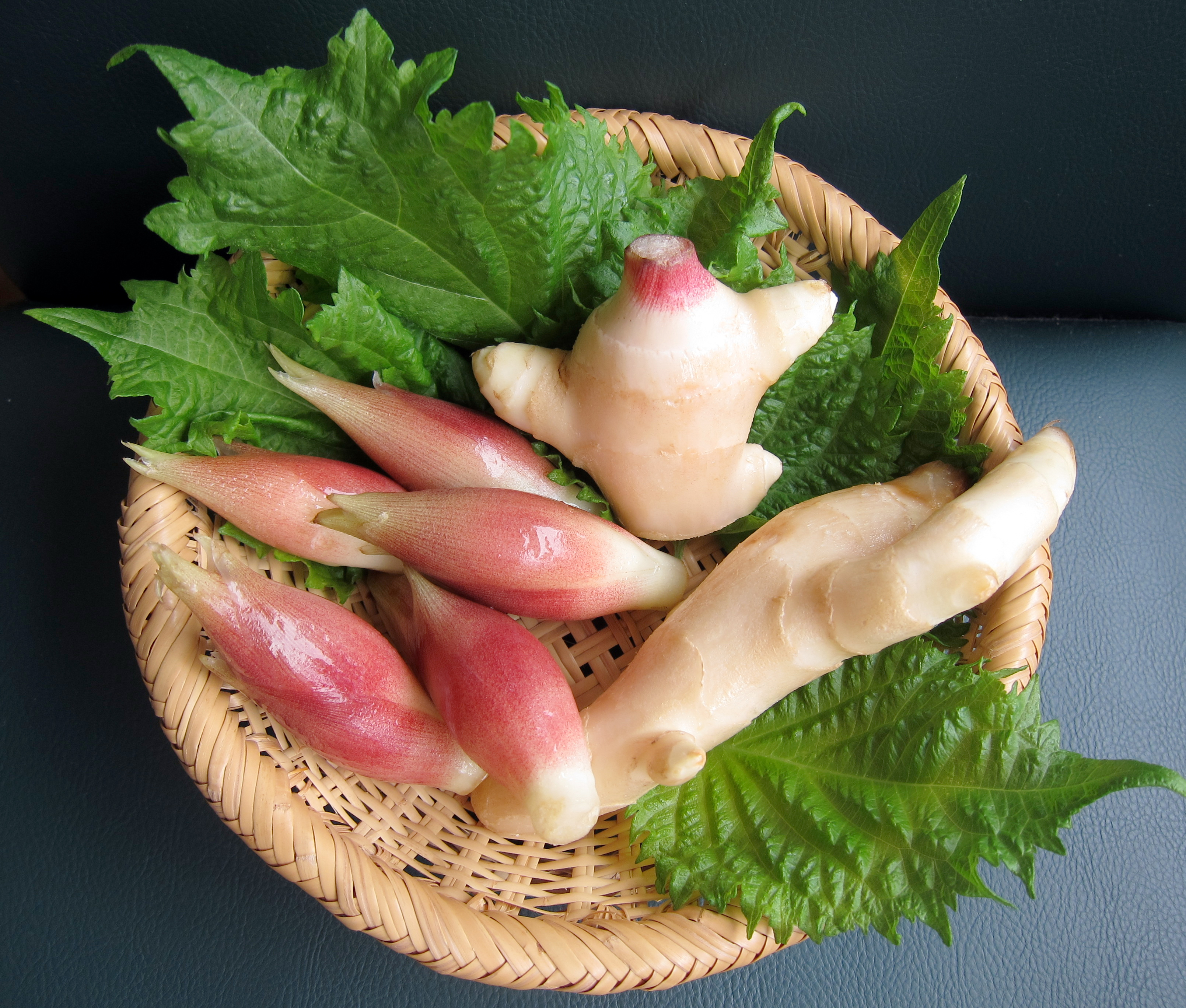In Japanese cooking, garnish is not just added to a dish to make it look pretty. The word to describe the herbs and vegetables that accompany a dish is yakumi, which means "medicinal flavor," and originally referred to the concoctions that practitioners of Chinese medicine made using various ingredients from nature.
Even in the 21st century, many people believe that the use of these fragrant, fresh herbs and vegetables is good for your health as well as your taste buds.
With a few exceptions such as green onions (available year-round in various varieties), the use of yakumi, like most other aspects of Japanese cuisine, is quite seasonal. The yakumi that are used in dishes most often in the summertime are tender green shiso leaves and two types of ginger: shin-shōga (new-harvest ginger root) and the flower buds of myōga (ginger). They are served on vegetables, meat or fish; on hiyayakko (chilled tofu); with cold noodles such as soba, sōmen and hiyamugi; and more.


















With your current subscription plan you can comment on stories. However, before writing your first comment, please create a display name in the Profile section of your subscriber account page.